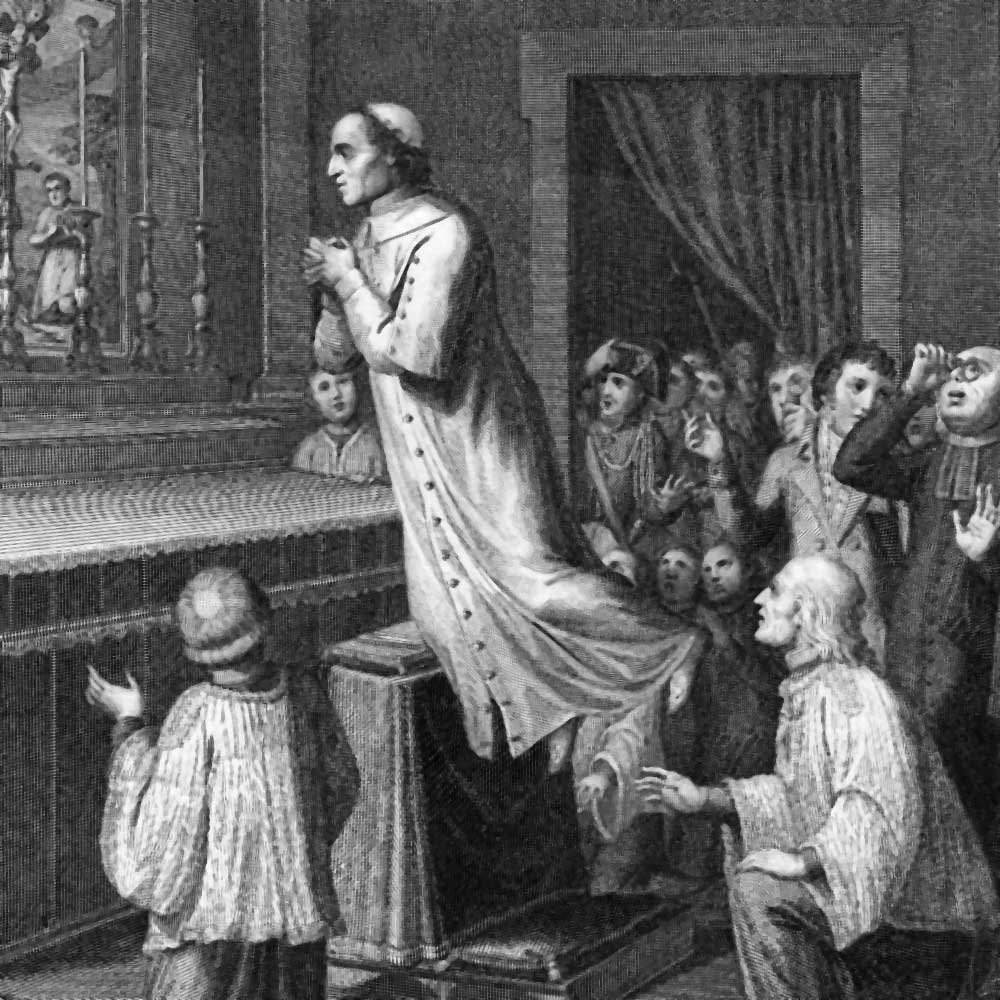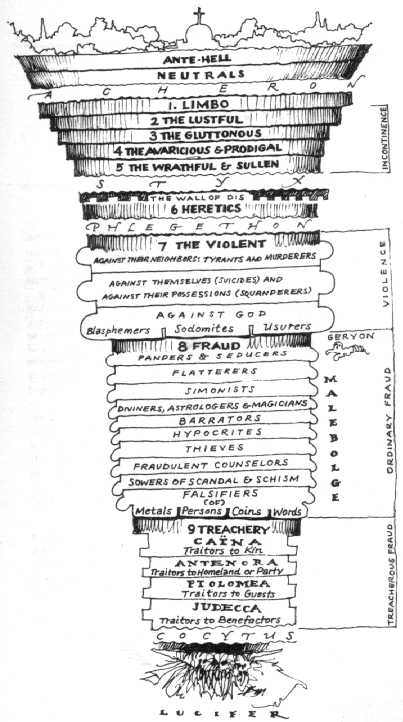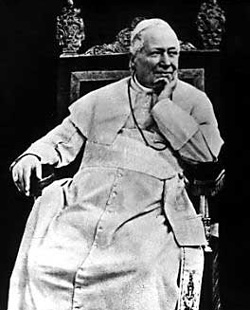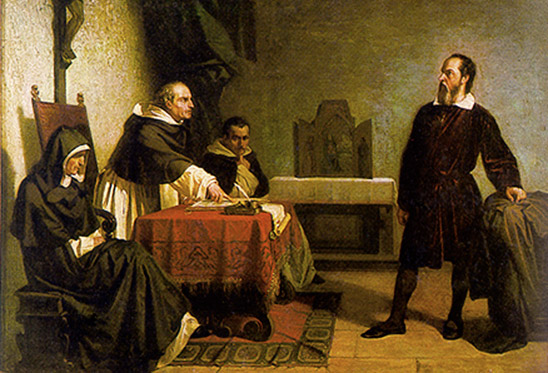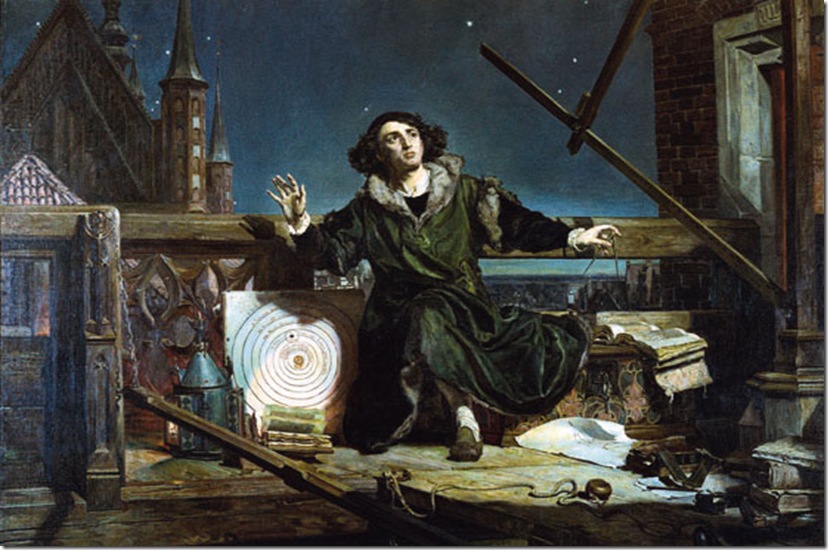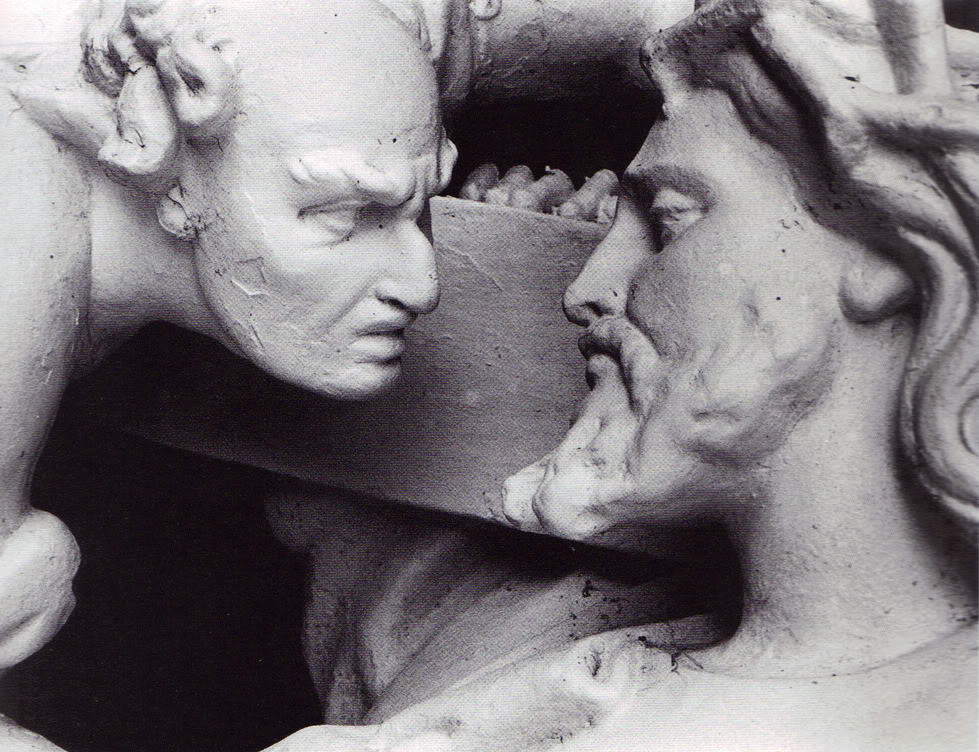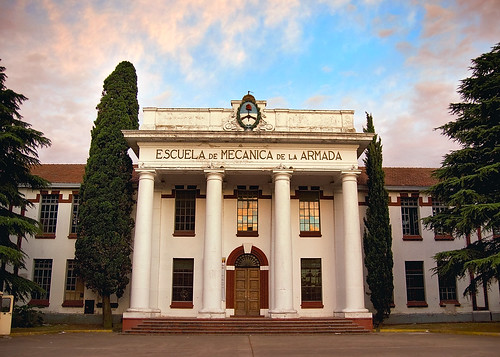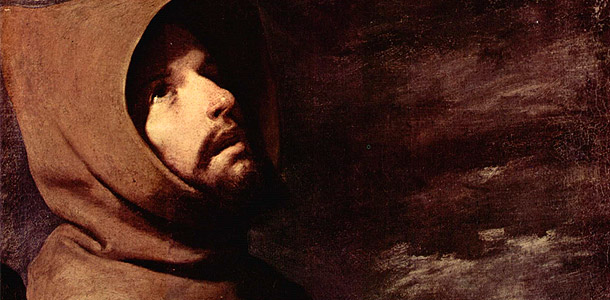Galileo Galilei has been disinterred, times without number, by the opponents of papal infallibility, and made to pronounce judgment against all such pretended claims. He has been portrayed as a martyr championing the cause of science against the Vatican obscurantists, as one tortured by the Inquisition, cast out of the Church's pale, and refused Christian burial. For these and other mythical reasons we Catholics are expected to feel nervously uneasy when the name of Galileo is mentioned — much as though a skeleton was in danger of being dragged from the cupboard to cast a shadow upon our good name.
Of these various accusations we are here concerned only with one, namely, that the sentence passed against Galileo and against the orthodoxy of his opinions is a glaring instance of science having proved that the infallible guide blundered.
THE STORY OF THE CASE. —
The answer to this well-worn fable will become apparent from a brief statement of what occurred. Galileo lived from 1564 to 1642. In many branches of science, he was justly famous, but here we are interested only in his then novel theory that the earth moved round the sun. This theory was first mooted by Copernicus, and found additional arguments in its favour from the discoveries which Galileo made with his telescope.
(Footnote: It is undeniable that the arguments of Galileo for the heliocentric system were not by any means conclusive. He had not found evidence for what was later found to be true. Even Huxley who examined the case, states that the opponents of Galileo
"had rather the best of it." The medieval astronomer had merely put forward an hypothesis that squared very satisfactorily with the facts.)
In spite of all deficiency in his arguments, Galileo asserted as indisputable the truth of his opinion. He wielded an able pen; and, as we shall see, this partly accounts for the treatment he received.
For four years, he had been proclaiming his theory, convincing some, and finding others who detected the weak points in his argument. In 1615, the ecclesiastical authorities took alarm. Up to that time, the letter of Holy Scripture was taken to express the final judgment in all matters, scientific and religious. On this principle, it seemed that Scripture clearly taught the opposite of Galileo's theory — for Scripture spoke of the sun staying its course at the prayer of Joshua, and of the earth as being for ever immovable. How then, it was asked, could Galileo, in the face of this, assert that the earth went round the sun?
Hearing that he was in disfavour, Galileo, in 1615, presented himself at Rome, and was courteously received. But meantime the official machinery was set to work. The experts, or
"qualifiers," of the Inquisition were called upon to give their opinion on two propositions taught by Galileo: first, that the sun is the centre of the world and does not move from its place; and, secondly, that the earth is not the centre of the world and has a diurnal motion. The Qualifiers reported that the first statement was outright heresy, because in open contradiction to the explicit teaching of Scripture; and that the second statement was, at least, theologically, incorrect. Cardinal (Saint Robert) Bellarmine was instructed to inform Galileo of this decision, and to tell him that he must renounce these opinions and promise not to advocate them either by word or by writing. This Galileo promised to do, and so avoided further trouble.
This report of the experts of the Inquisition inspired a decree of the Congregation of the Index, which forbade the publication of works advocating the Copernican system, and which gave as its reason that it was open to heresy to declare that the sun did not move through the heavens.*
(Footnote: We may note in passing that this decree seems to have been a clumsy compromise between the more conservative theologians and those who saw that perhaps it was not necessary to hold that every expression in Scripture was scientifically exact; for the decree allowed the Copernican system to be held as an hypothetical explanation of the movements of the heavens, provided this was not stated as a fact. Clearly, if the doctrine embodied formal heresy, no Church authority could tolerate its discussion, even as an hypothesis.)
On this point, (that it was open to heresy to declare that the sun did not move through the heavens) it is to be noted that Cardinal Bellarmine, the most influential member of the Sacred College, writes to one of Galileo's ardent supporters: — "I say that if a real proof be found that the sun is fixed and does not revolve round the earth, but the earth round the sun, then it will be necessary, very cautiously, to proceed to the explanation of the passages in Scripture which appear to be contrary, and we should rather say that we have misunderstood these than pronounce that to be false which is demonstrated." This admission is important in the light of after events.
Galileo paid no attention to his promise made to the Inquisition, and again loudly and constantly proclaimed his system true beyond all doubt. In 1624, he visited Rome again and was treated with lavish hospitality by the Pope; but he failed to secure the withdrawal of the decree against his works. In 1632, he employed a method of defence which was of rather questionable morality. He submitted to the Church authorities a work in which his view was treated all through as an hypothesis. The book was a dialogue between a Ptolemaist and two Copernicans, in which the Ptolemaist was completely routed. The censors gave leave for the work to be published. Having obtained this permission, Galileo now changed the setting of the work by advancing his view not as a theory but as a fact, and made the routed Ptolemaist closely resemble the reigning Pope, Urban VIII. This was published in 1632, and was rightly regarded by the officials at Rome as a direct challenge. Being cited before the Inquisition, he protested that since his former condemnation he had never held the views of Copernicus. This insincere declaration did not save him; he was condemned, as suspected of heresy, to incarceration at the pleasure of the tribunal, and to recite the seven penitential psalms once a week for three years.
The story of his torture and severe imprisonment is fiction. In no true sense was he a prisoner. His Protestant biographer, von Gebler, tells us
"he spent altogether twenty two days in the buildings of the Holy Office, and even then not in a prison cell with barred windows, but in the handsome and commodious apartment of an official of the Inquisition." He was then allowed to live with his friends, first at Rome, and later at Florence, in a delightful place amongst the suburbs. When he was dying he received a special blessing sent him by the Pope, and, so far from being refused Christian burial, he was interred in the church of Santa Croce at Florence.
THE OBJECTION RAISED. —
Our adversaries take their stand upon the decree which was published by the Congregation of the Index when it first condemned Galileo's theory. They assert that the question was one of faith, for a doctrine is condemned as heretical; and, moreover, that the Pope had full knowledge of the doings of the Congregation and sanctioned all its proceedings. Hence, they conclude that there is here another instance of the infallible guide blundering, and this time being corrected by science.
COMMENT ON THE CASE. —
We frankly admit that this decision against Galileo was most unfortunate, in that it asserted, an opinion to be heretical which was later allowed to be orthodox; its finding was reversed when, years later, a proof for the heliocentric system was submitted which was as cogent as Galileo's was defective. The principle of biblical interpretation, upon which the decision was based, was a false one, although it was current at that time. It was thought, for instance, that Scripture must always speak in scientific terminology and with scientific accuracy, even when using the language which men ordinarily employ when conveying their ideas to one another; thus when it spoke of the sun rising or going to rest, it meant that the sun went through the two operations of rising and sinking. Whereas we now admit that the Scriptures, when describing what appears to our senses, may and do use the ordinary terms which we employ. For the sake of accuracy, the Scripture is not obliged — any more than was Newton — to avoid using the expression "the sun rose," or "the sun was stayed in its course through the heavens."
THE OBJECTION ANSWERED. —
Did the Pope err as an infallible teacher? Surely not, if he did not assume the role of such a teacher. It is simply misrepresenting history to say that anyone, even the Pope himself, thought an ex cathedra statement had been made. As a matter of fact, the Pope's signature is not appended to any of the documents connected with Galileo's condemnation, and even if the signature were appended, it would merely be a guarantee of the authenticity of the document — unless clear indication were given that much more was intended. And, further, though the Pope was present at some of the deliberations of the Cardinals, and was aware of what steps were being taken, that fact alone does not constitute the decisions arrived at as infallible pronouncements. The same answer applies to the objection that a Papal Bull was issued accompanying a later edition of the list of books proscribed by the Index, amongst which books were included any that advocated the Copernican system. Such a Bull merely gives the list a guarantee that it is official.
CONFIRMATORY EVIDENCE FROM PROTESTANT WRITERS. —
Fair-minded Protestant writers are as explicit on these points as any Catholic could be. Thus, for example, the astronomer Proctor writes:
"The Catholic doctrine (of papal infallibility) is perfectly definite; and it is absolutely certain that the decision in regard to Galileo's teaching, shown now to have been unsound, does not in the slightest degree affect the doctrine of infallibility as defined by the Vatican Council" of 1870 (Knowledge, volume 9, page 274). And again, another Protestant, Karl von Gebler, in his work, Galileo and the Roman Curia, writes to the same effect:
"We grant that the two Congregations of the Index and the Inquisition, with the two Popes who sanctioned and promulgated their decrees, were in error; but not one ever held that the decisions of the Roman Congregations were in themselves infallible, even when approved by the Pope, unless specially set forth by the Pope with all the conditions required for an ex cathedra definition."
We note further that the action of Cardinal Bellarmine clearly shows that the answer of the Congregation was not intended to be final; for he admits that if science can show, which at that time it could not do — that the earth moves round the sun, the principle then in use for interpreting Scripture will have to be carefully readjusted.
THE FATE OF KEPLER. —
In conclusion, when we are taunted with the condemnation of Galileo, we may reply with a tu quoque (‘you also’) argument. For Protestants as well as Catholics, held to the views of Galileo's judges; for example, Luther called Copernicus a fool, for turning astronomy upside down, and Melanchton and practically all Protestant professors strongly condemned the system as contrary to the teaching of the Bible. And more remarkable still, just thirty-seven years before Galileo got into trouble, the Protestant Theological Faculty of Tubingen condemned Kepler for teaching the identical scientific truth which Galileo favoured. The divines unanimously decided that Kepler’s book,
Prodromos Disserationum Cosmographicarum, contained a deadly heresy, because it contradicted the teaching of the Bible in that passage where Joshua commands the sun to stand still. Now, these divines held the doctrine of "private interpretation of Scripture"; are they not then in difficulties, when science has proved that on one occasion this interpretation was erroneous — and if on one occasion, why not on others? The condemnation of Kepler by the Protestants tells far more against them than does the condemnation of Galileo against us; for in the one case, science gives the lie direct to a fundamental principle of a whole religious system — the principle of private interpretation; while in the other case a defined dogma, that of papal infallibility, as in no way affected.
THE OBJECTION PRESSED FURTHER. —
It is urged that the case of Galileo at least shows that the Church was itself mistaken in matters of faith; for it held a wrong canon of biblical criticism, namely, that the expressions in Scripture which describe physical phenomena are always scientifically exact. We answer that the Church never even considered this question — much less did she believe with the assurance of faith that this principle was correct; it was merely admitted by the majority of the theologians as a commonly accepted rule, and as yet, no convincing reasons had been adduced for rejecting it. No one ever asserted that it was a doctrine of faith; as we have twice remarked, Bellarmine was prepared to give it up; and, moreover, other orthodox theologians explicitly rejected it, maintaining, in defence of Galileo, that
"the Bible taught us how to go to heaven, not how the heavens go."
Link (here) to read the full article by Fr. H. B. Loughnan, S.J.






